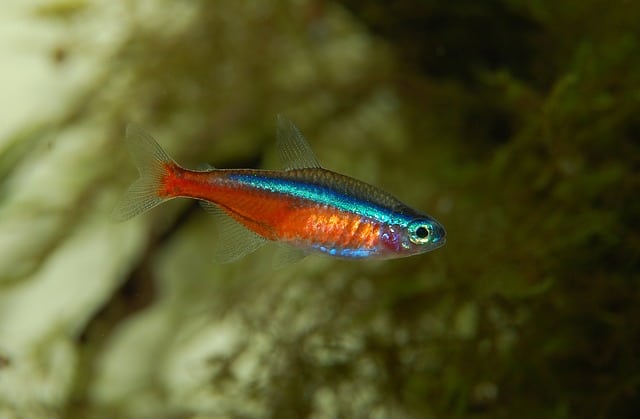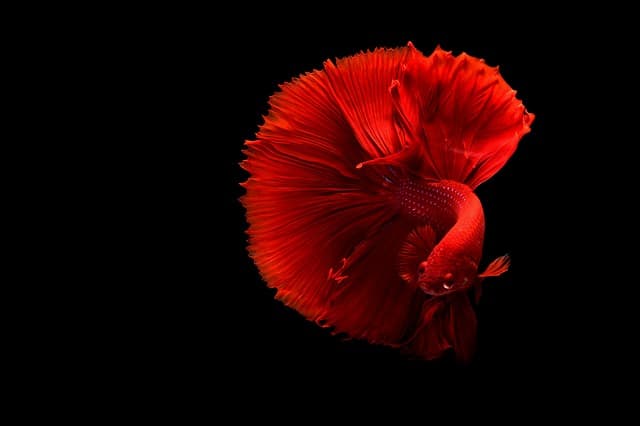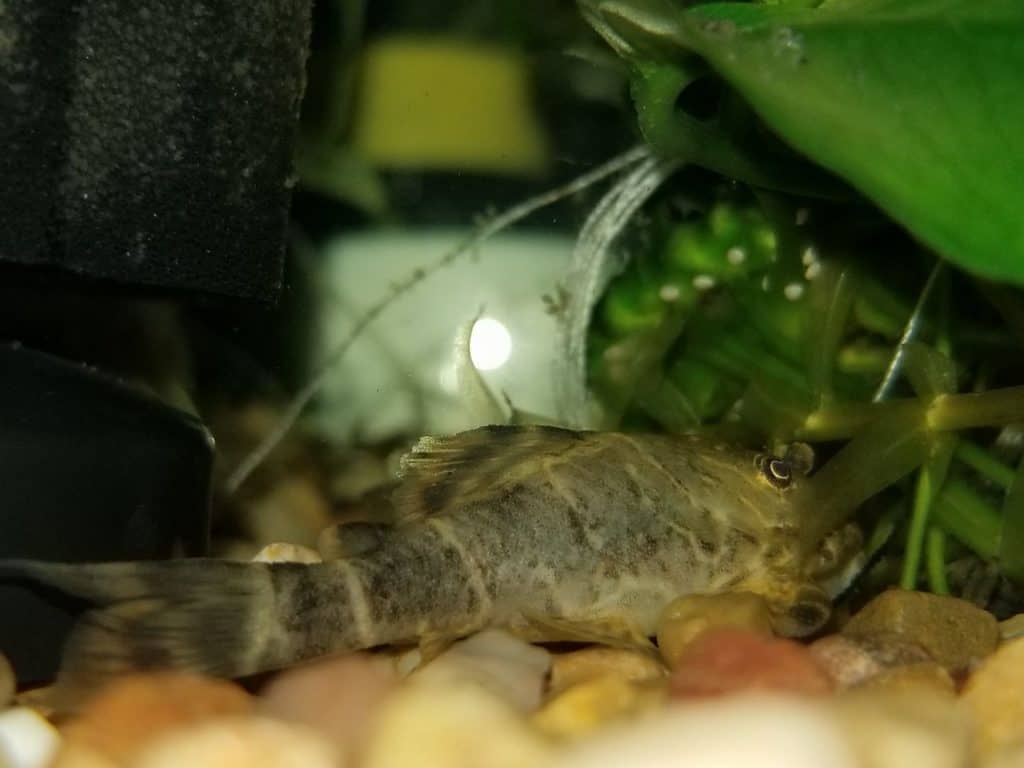Silver dollar fish are highly popular among freshwater aquarists and get their name from their unique appearance reminiscent of a shiny, round silver dollar. These tropical fish are native to the weedy river basins in South America and look much like the predatory piranha fish. But are the two related?
Silver dollars belong to the same fish family as piranhas, which is the Characidae family. Unlike piranha, silver dollars are rarely hostile or predatory and can be kept with other peaceful fish in an extra-large community tank environment.
Now that you know silver dollars and piranhas are part of the same fish family but not alike in terms of temperament, let’s explore this topic further together. We’ll learn how the two species compare to (and differ from) one another, how long silver dollars typically live in captivity, and if they’ll eat other fish in a contained aquatic environment.
So, if you’re ready to learn more about silver dollars and their relation to the piranha fish, then let’s continue…
How are Silver Dollars Similar to Piranhas?
Silver dollars and piranhas are both classified as members of the tropical Characidae family of fish, characterized mainly by their well-developed teeth. They appear large, flat, and grey in color and are active, fast swimmers by nature. Both also originate in murky freshwater river basins of South America and require similar tank parameters when in captivity.
Silver dollars and piranhas are also both considered to be schooling fish that prefer to swim in the mid- to upper level of the water. A ‘school’ is defined as a group of fish that swim together in a synchronized or polarized fashion. They need the presence of others of their kind not only to survive but to thrive in their aquatic habitat.
How are Silver Dollars Different than Piranhas?
The main difference between silver dollars and piranhas is their temperament. Silver dollars are peaceful to semi-aggressive whereas as piranhas are highly aggressive. They prefer different types of food as well – silver dollars are omnivorous but like to eat plants; piranhas too are omnivorous but would rather eat meat.
Another key difference between silver dollars are piranhas are their teeth. Silver dollars have flat, yet sharp teeth (much like those of human beings) used for eating both plant- and meat-based foods. Piranhas, on the other hand, have pointy, razor-sharp teeth (reminiscent of a shark) designed for ripping apart meat and flesh.
Are Silver Dollar Fish Predacious?
Most species of silver dollar fish are said to be peaceful to semi-aggressive in temperament with some types generally more hostile than others. When kept in a school of at least 5 in a large, species-only tank, they’re typically quite calm. That said, with the right tankmates, they can also live peacefully.
Their predatory instincts tend to kick-in at mealtime. You may notice them chasing each other and nipping at fins as they compete for food. Hence why they must be kept well-fed at least 2 per day – to help keep those predacious tendencies at bay.
Do Silver Dollars Eat Other Fish?
As the ‘vegetarian cousin’ to the piranha, silver dollars can get aggressive at mealtimes or if underfed. Otherwise, they tend to be peaceful in nature and don’t usually eat other fish. They may inadvertently swallow smaller fish that happen to swim into their mouths during a feeding frenzy which is why you should keep them others of like size or slightly bigger.
Will Silver Dollar Fish Bite Humans?
It’s highly unlikely for a silver dollar fish to bite a human. This species is mainly peaceful however, they do have sharp teeth that can inflict significant pain and/or injury should they inadvertently bite your finger. For this reason, avoid placing your hand in the tank at feeding time or when fish are attempting to mate.
Is Chasing a Sign of Silver Dollar Fish Aggression?
Silver dollars typically don’t act aggressively towards one another unless they’re competing for food or getting ready to mate. If your fish are well fed and not breeding but still exhibiting signs of hostility, then it could be the result stress or disease. Check the water parameters for accuracy; ensure the tank isn’t too small/overcrowded; watch for signs of illness like lethargy, discoloration, rapid gill movement, etc.
How Long can Silver Dollar Fish Live in Captivity?
Silver dollars can live up to 10 years in captivity, if properly cared for, that is. They’ll live longer in an aquatic environment that closely mimics their natural habitat. Despite their hardy nature, accurate and stable water parameters are a must to maintain their overall health and improve their longevity.

Why do Silver Dollar Fish get Black Spots?
Black spots will develop on silver dollar males during courtship or breeding. They’ll appear as two dark areas vertically arranged behind the base of the pectoral fins. Should you notice black spots appearing all over on both male and female silver dollars, take caution as this could be a sign of cell damage or illness such as fin rot.
It’s important to note that the spotted silver dollar fish has dark spots covering its body naturally and is in no way a sign of disease. Be sure you know which species of fish you have and what is considered ‘normal’ appearance for that type of silver dollar. Not all silver dollars are created equal – for example, spotted silver dollars prefer brackish instead of freshwater conditions.
Best Tank Conditions for Silver Dollar Fish?
To prevent your silver dollars from becoming aggressive, you must keep their aquatic environment clean and stable. A tank that’s too small or overcrowded with improper water parameters increases stress and leads to atypically hostile behavior.
Silver dollars should be kept in schools of at least 5 and since they grow up to 6 inches or more in length, you must house them in a large 75-gallon aquarium – though bigger is better, especially if you intend to stock other types of fish as well. Anything less a 50-gallon tank isn’t practical for this highly active fish.
Silver dollars are tropical, freshwater fish and prefer warmer water (75- to 85-degrees Fahrenheit). Therefore, a heater and aquarium light are required. Due to their large size and the amount of waste they produce, a high-quality filtration system is also necessary.
Silver dollars, though hardy, can become anxious and ill if the pH is ‘off.’ It should be kept stable at a level of 5.0 to 7.0. A planted tank is also recommended – not only will it help mimic their natural habitat but also provide fish will a source of food. Look for options like java fern, hornwort, and water sprite.
Which Fish are Related to Piranhas?
Apart from silver dollars, pacu fish are also related to piranhas. Pacus also originate in South American freshwater rivers and are omnivorous but prefer to feast on vegetation, much like silver dollars. What’s unique about pacu fish is they have teeth that look much like those of human beings.
Final Thoughts
To conclude, silver dollar fish belong to the Characidae family, which is the same family as the piranha fish. However, unlike piranhas, silver dollars are rarely aggressive or predacious in nature and can be kept with other peaceful fish in a community tank environment.
I trust this article has been both interesting and informative. Thanks for reading and good luck with your aquarist hobby.
Recommended Posts
Are Silver Dollar Fish Fin Nippers?
Are Silver Dollars Easy to Breed?
15 Best Tankmates for Silver Dollar Fish






